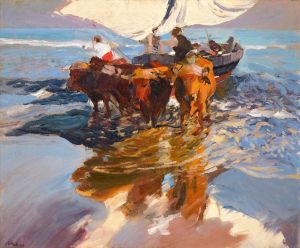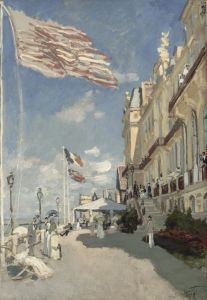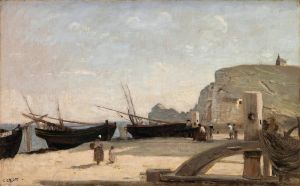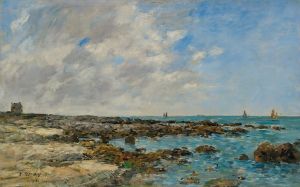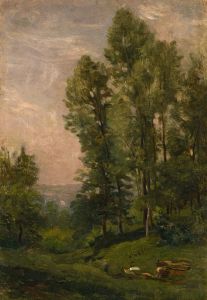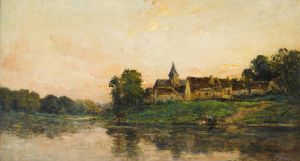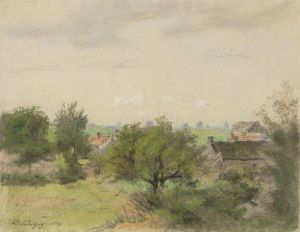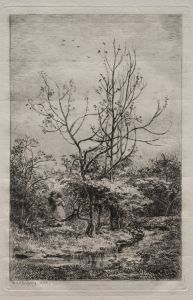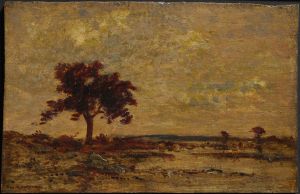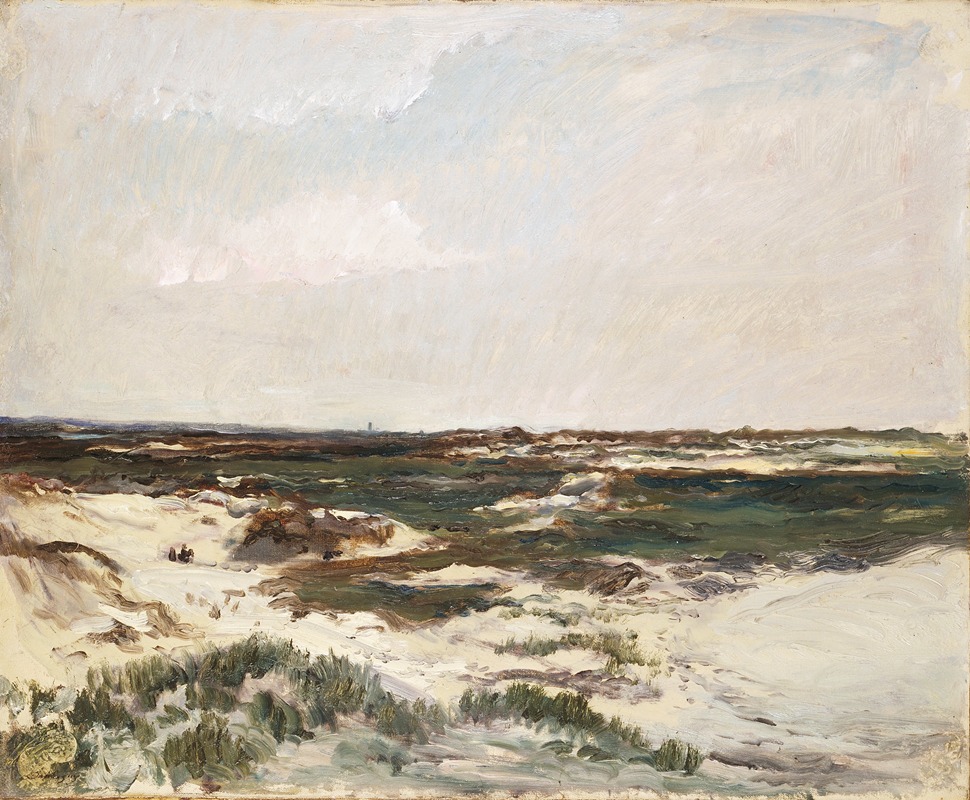
The Dunes at Camiers
A hand-painted replica of Charles François Daubigny’s masterpiece The Dunes at Camiers, meticulously crafted by professional artists to capture the true essence of the original. Each piece is created with museum-quality canvas and rare mineral pigments, carefully painted by experienced artists with delicate brushstrokes and rich, layered colors to perfectly recreate the texture of the original artwork. Unlike machine-printed reproductions, this hand-painted version brings the painting to life, infused with the artist’s emotions and skill in every stroke. Whether for personal collection or home decoration, it instantly elevates the artistic atmosphere of any space.
Charles François Daubigny, a prominent French landscape painter and a key figure in the Barbizon School, created The Dunes at Camiers during the 19th century. This painting exemplifies Daubigny’s dedication to capturing the natural beauty of the French countryside, a hallmark of his artistic career. Known for his innovative approach to plein air painting, Daubigny often worked outdoors to directly observe and depict the landscapes he painted, lending his works a sense of immediacy and authenticity.
The Dunes at Camiers portrays a serene coastal scene, likely inspired by the dunes near the village of Camiers in northern France. The composition features rolling sand dunes, sparse vegetation, and a vast expanse of sky, emphasizing the simplicity and tranquility of the natural environment. Daubigny’s use of soft, muted tones and delicate brushwork reflects his ability to convey the subtle interplay of light and atmosphere, a technique that influenced later Impressionist painters.
Daubigny’s connection to the Barbizon School is evident in this work, as the movement emphasized a departure from academic traditions in favor of painting nature as it appeared. While the Barbizon artists often focused on the forests of Fontainebleau, Daubigny expanded the scope of the movement by exploring other regions of France, including coastal areas like Camiers. His interest in capturing the fleeting effects of light and weather on the landscape aligns with the broader goals of the Barbizon School and foreshadows the Impressionist movement.
The painting also reflects Daubigny’s broader artistic philosophy, which prioritized the emotional resonance of a scene over strict realism. By focusing on the quiet beauty of the dunes, he invites viewers to appreciate the understated charm of the natural world. This approach resonated with his contemporaries and contributed to his reputation as one of the leading landscape painters of his time.
Today, The Dunes at Camiers is recognized as an example of Daubigny’s skill in depicting the French landscape with sensitivity and nuance. While specific details about the painting’s provenance or current location are not widely documented, it remains an important part of Daubigny’s oeuvre and a testament to his influence on the development of modern landscape painting.





